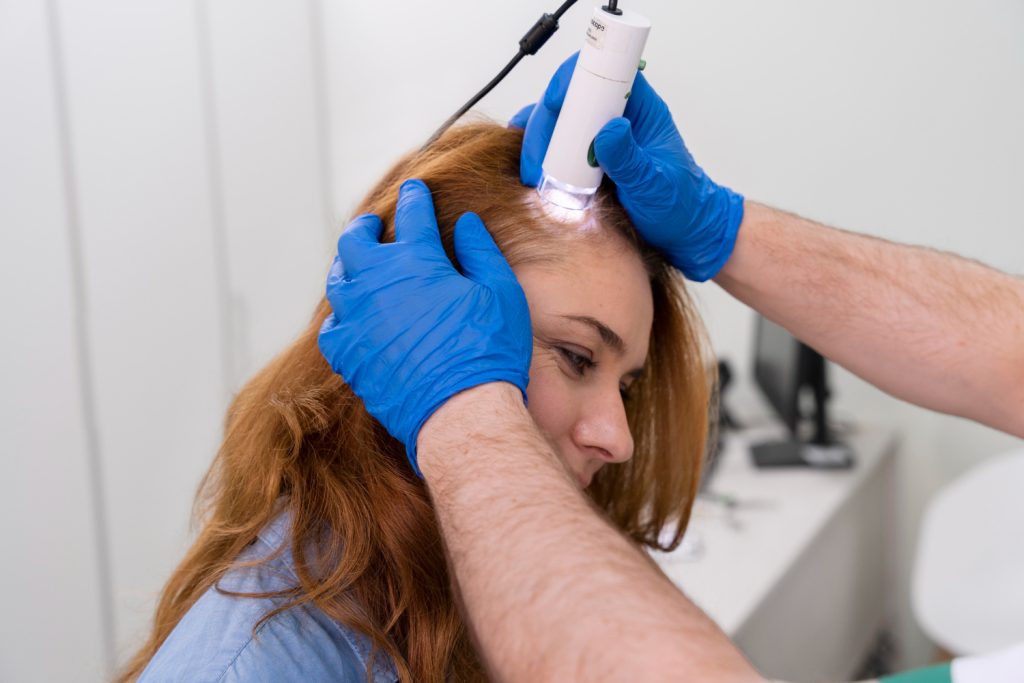
Laser vs LED for Hair Growth: Which One Is Right for You?
Table of Contents
If you’ve been searching for effective solutions to combat thinning hair or hair loss, you’ve likely come across laser and LED hair growth devices. Both technologies use light therapy to stimulate the scalp, encourage hair regrowth, and strengthen existing strands—but they’re not the same. Understanding the difference between laser vs LED for hair growth can help you choose the best treatment for your needs.
In this guide, we’ll break down how each technology works, the science behind them, their benefits, and how to decide which one is right for you.
Understanding Light Therapy for Hair Growth
Before comparing laser vs LED for hair growth, it’s important to understand the basic concept behind both. Light therapy, also known as low-level light therapy (LLLT) or photobiomodulation, uses specific wavelengths of light to stimulate cellular activity in the scalp.
The light penetrates the scalp and energizes the cells within hair follicles. This process helps improve blood circulation, enhances nutrient delivery, and encourages hair follicles to enter the growth phase. Over time, consistent use of light therapy can lead to thicker, fuller, and stronger hair.
What Is a Laser Hair Growth Device?
Laser hair growth devices use low-level laser diodes that emit concentrated light beams. The light is coherent and monochromatic, usually in the red or near-infrared spectrum—typically around 650–900 nanometers.
These laser diodes penetrate deeper into the scalp, targeting hair follicles directly to stimulate activity and promote regrowth. Devices like laser combs, helmets, and caps use this technology to provide consistent, controlled stimulation across the scalp.
Benefits of Laser Hair Devices
- Precise light targeting: Lasers deliver light in a focused beam, which penetrates deeper into the scalp.
- Clinically proven: Several studies show laser devices can effectively promote hair growth and density.
- Effective for both men and women: Laser therapy works for androgenetic alopecia in both genders.
- Non-invasive: It’s a safe, pain-free, and drug-free approach to hair restoration.
Potential Drawbacks
- Cost: Laser devices tend to be more expensive due to their precision technology.
- Limited coverage: Since laser beams are narrow, more diodes are needed for full scalp coverage.
- Consistency required: Results depend on regular, long-term use.
What Is an LED Hair Growth Device?
LED hair growth devices use non-coherent light, meaning the light spreads out rather than focusing in a single direction. LEDs also emit red and near-infrared light, often in the 630–680 nanometer range.
While LED light doesn’t penetrate as deeply as laser light, it still stimulates cellular activity and improves blood flow to the scalp. Many home-use LED hair caps and panels combine multiple light wavelengths to maximize scalp coverage and comfort.
Benefits of LED Hair Devices
- Wider coverage: LED lights spread over a larger area, offering even scalp stimulation.
- More affordable: Generally less expensive than laser devices while still offering visible results.
- Gentle and safe: LED lights emit less heat and are suitable for all skin types.
- Can be combined with other treatments: Often used alongside topical serums or scalp therapies.
Potential Drawbacks
- Less penetration depth: The light doesn’t reach as deep into the scalp as lasers.
- Longer treatment time: May require more frequent or prolonged sessions to achieve noticeable results.
- Variable effectiveness: Results can vary depending on hair type, device quality, and consistency of use.
Laser vs LED for Hair Growth: Key Differences
Here’s a quick comparison to help you see the distinctions more clearly:
| Feature | Laser Devices | LED Devices |
| Light Type | Coherent (focused beam) | Non-coherent (scattered light) |
| Penetration Depth | Deeper penetration | Shallow to moderate penetration |
| Coverage Area | Targeted and precise | Broader and more even |
| Effectiveness | Clinically proven results for hair regrowth | Effective but generally milder results |
| Price Range | Higher due to advanced technology | More affordable |
| Best For | Advanced hair thinning or pattern baldness | Mild hair loss or early prevention |
| Comfort Level | Moderate; can be slightly warm | Very comfortable and cool |
| Treatment Time | 15–30 minutes, 3–4 times weekly | 20–30 minutes, 3–5 times weekly |
What Does Science Say?
Scientific studies have consistently shown that low-level laser therapy (LLLT) can be effective in promoting hair growth. For example, a study published in Lasers in Surgery and Medicine found that laser treatments significantly increased hair density in both men and women with androgenetic alopecia.
LED devices, while less studied, still show promising results. Research suggests that LED light therapy also promotes mitochondrial activity (the cell’s energy production) and supports scalp health. However, due to lower light intensity, results might take longer to appear compared to lasers.
How to Choose the Right Option for You
Choosing between laser vs LED for hair growth depends on your individual hair concerns, budget, and lifestyle. Here are some pointers to help you decide:
For noticeable thinning or pattern baldness: A laser hair device might be your best option due to its stronger and more targeted light delivery.
For mild hair loss or maintenance: An LED device can be sufficient, especially if you’re looking for affordable, gentle scalp stimulation.
For convenience and comfort: LED devices often offer lighter designs and cooler light, making them easier for longer sessions.
For budget-conscious users: LED devices provide good value for money and can be a great entry point into light-based hair therapies.
For medical-grade results: Laser devices backed by clinical trials may offer more measurable improvements.
Combining Laser or LED with Other Treatments
For best results, light therapy can be combined with other hair care treatments. Pairing your laser or LED device with topical solutions like minoxidil, scalp massages, or nutrient-rich hair serums can enhance effectiveness. Maintaining a balanced diet, reducing stress, and ensuring good scalp hygiene also support healthier hair growth.
Always consult a dermatologist or trichologist before starting a new treatment—especially if you have scalp conditions or severe hair loss.
Also Read: Laser Hair Device: Everything You Need to Know Before Choosing One
Final Thoughts
When it comes to laser vs LED for hair growth, both technologies have their merits. Laser devices offer deeper light penetration and are supported by strong clinical evidence, making them ideal for those with noticeable hair thinning. Meanwhile, LED devices provide wider coverage, affordability, and comfort—perfect for preventive care or early-stage hair loss.
Ultimately, the best choice depends on your personal hair goals, budget, and commitment to consistent use. With patience and regular treatments, both laser and LED technologies can help you achieve healthier, fuller hair naturally—without invasive procedures or harsh chemicals.

